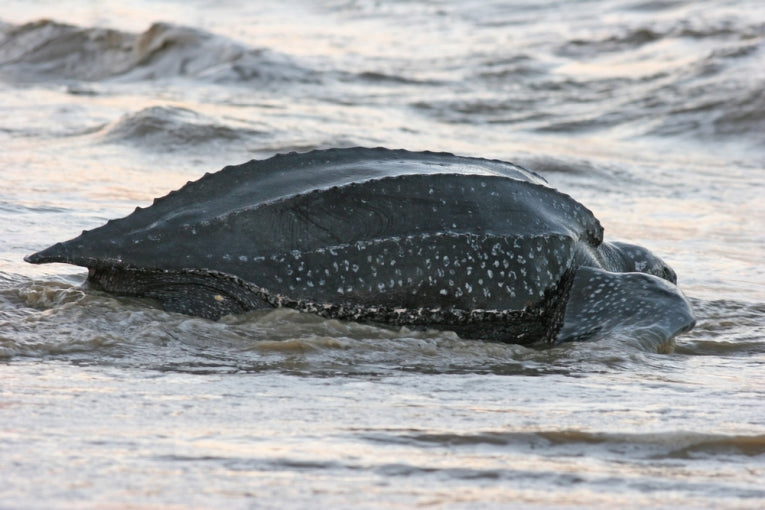When hatchlings take off from their nests, leatherback turtles enter the "Lost Years" (from 0-10 years old). This period is important to us now that declining populations have forced us to adopt any conservation means at our disposal. For the eastern Pacific population, "Hatchling Highways" in the form of rapid offshore eddies have now been identified as transporting turtles away from predators to their oceanic refuges.
The huge, critically endangered leatherback sea turtle (Dermochelys coriacea) has declined to 10% of its population from twenty years ago. As our largest sea turtle, it has specialised in eating jellyfish, often at great depths. For this reason, it has no obvious carapace and can resist water pressure with its flexible internal shell and leathery external covering.
The poaching of its eggs, fishing, degradation of nesting and foraging areas have contributed to a precipitous decline in Central America, only slightly helped by protection and juvenile turtle recruitment efforts in Costa Rica. The largest nesting colony at Playa Grande in Costa Rica is confirmed to be the most successful colony in transporting youngsters on the offshore eddies and other currents. Passive tracers were used to indicate where flows carried nestlings from the coast.

Baby Leatherback sea turtle; Credit: Shutterstock
After six months, turtles develop a fuller and deeper swimming ability, but until then, the authors assume they are carried, rather like the passive tracers. Apart from Playa Grande, the tracers stayed near the shore at the times of hatching (December to April) even though the alternative beaches were only a few hundred km away. Apart from direct natural selection possibilities, surviving females returning to their native beach would account for the popularity of Playa Grande.
Low reproductive rates and late maturity bedevil many marine vertebrates such as turtles. So increased breeding success and conservation of young animals needs now to be high on the list of techniques we must learn. Green turtles have already been tagged and followed across the whole Pacific, so, next, the leatherback needs a fuller history. We simply know it can dive to 1000m and is the most pelagic of turtles It therefore possibly travels even further than other species.
Despite genetic differences between Pacific and other populations, it is possible that the eastern Pacific now contributes most of the recruits to the failing species. After a disastrous egg-poaching episode on Malaysian and other beaches, it seems many rookeries have been deserted over the last decade. Perhaps Costa Rica and other American countries can compensate?
The full research paper has been published in the Proceedings of the Royal Society B: Biological Sciences.










